Male Breast Reduction
Enlargement of the male breast is known as gynaecomastia. It has a number of causes but in most cases there is no obvious reason for the development of gynaecomastia.
It is a relatively common condition. It is particularly common in adolescence and usually settles by itself in about 10% of cases though it can persist into adult life. Gynaecomastia is also relatively common in old age. With more and more patients losing significant amounts of weight, there has been an increase in a type of gynaecomastia, where excess skin is the main issue (pseudogynaecomastia).
If you think you have this condition and have not seen a doctor about it before, It is important that you see your own GP to check your chest and to confirm that no further tests are required. A testicular examination to exclude lumps may be required. Sometimes referral to a NHS breast clinic is needed if there is a particular lump that needs to be evaluated. It should be appreciated though that in most cases gynaecomastia is not caused by anything sinister.
Why do patients seek surgery for gynaecomastia?
Why do patients seek surgery for gynaecomastia?
- Embarrassment in clothing – unable to wear snug-fitting t tops such as T-shirts
- Lack of confidence when not wearing a top – when swimming, on the beach.
- Rarely the problem can cause physical symptoms, such as discomfort when exercising.
- Asymmetry – a small group of patients have difference between the two breasts that can cause cosmetic concerns.
What happens during the consultation?
How long will I be in hospital ?
What happens during the operation?
What is the recovery period following surgery?
Mr Chester recommends that patients wear snug-fitting “skin” or T-shirt for 3 weeks after the operation, to apply gentle pressure.
Follow-up
Mr Chester normally sees patients following gynaecomastia surgery at around 1 -2 weeks, 6 weeks and 3-6 months post-operatively, although this is only a guide and sometimes patients can require additional appointments for dressings etc. Mr Chester provides most, if not all, of the aftercare himself to provide reassurance throughout the patient journey.
Before and after photographs
Case 1
19 year old gentleman with moderate gynaecomastia treated with surgery to remove a donut shape of skin around the areolas and underlying breast tissue. Scars are located around the areolas. Post-operative photographs have been taken at around 6 months.
Before surgery
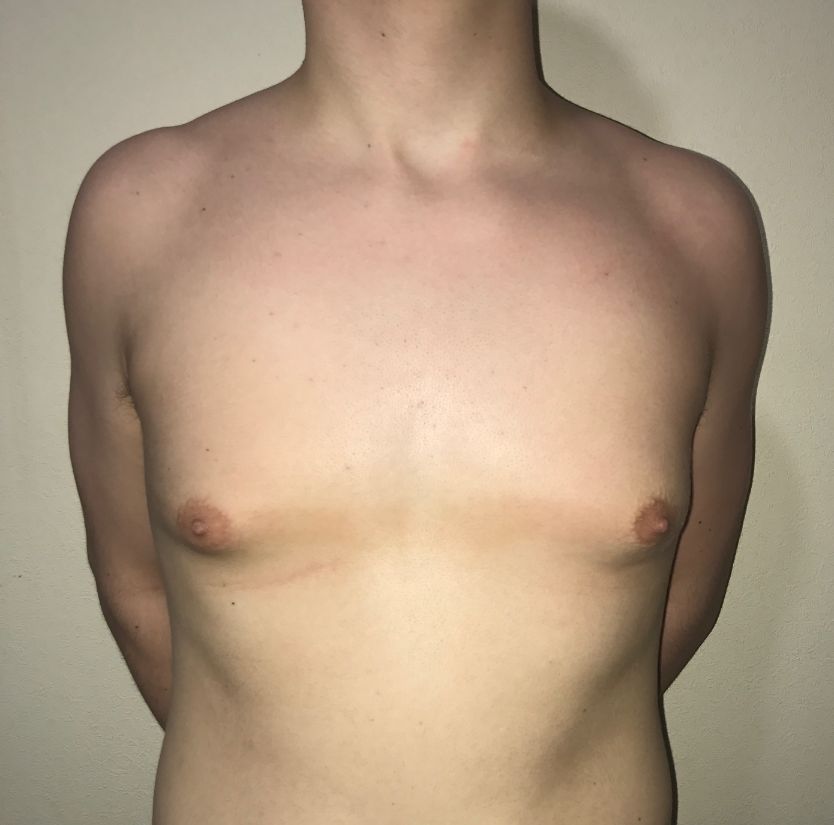
After surgery
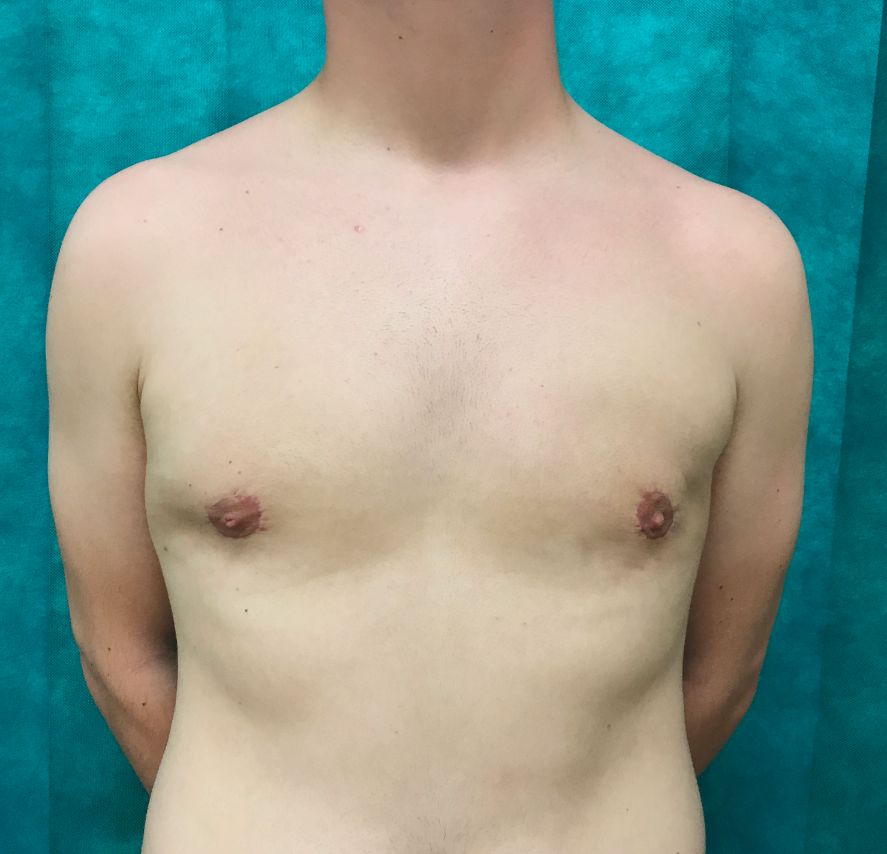
57 year old gentleman with moderate gynaecomastia. Excess breast tissue and donut shape of skin taken from around areolas. Post-operative photographs taken at around 3 months. Scars are located around the areolas.
Before surgery
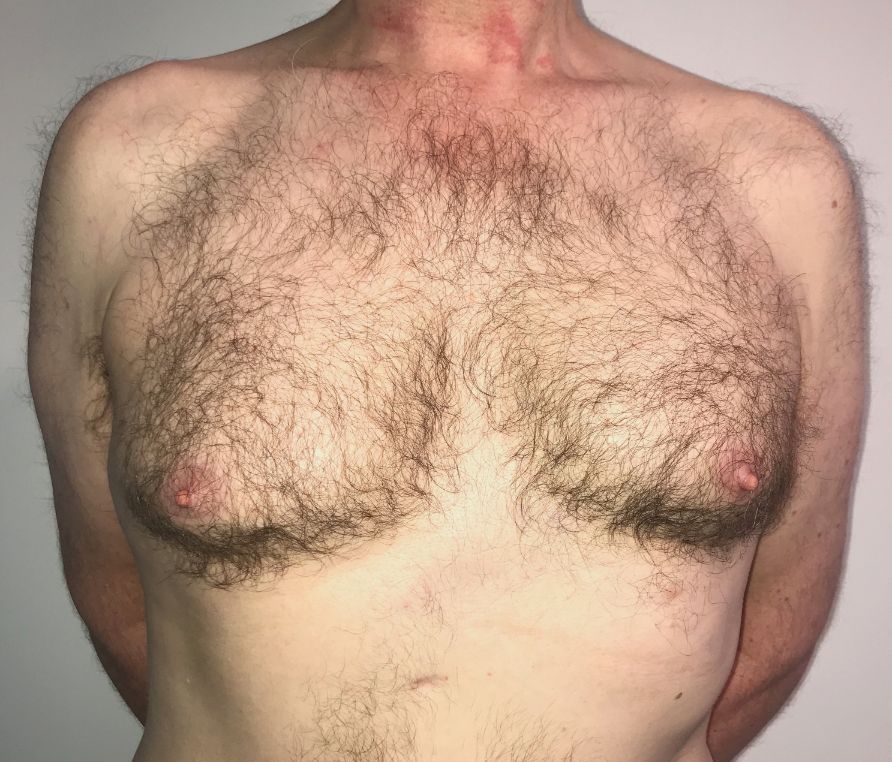
After surgery
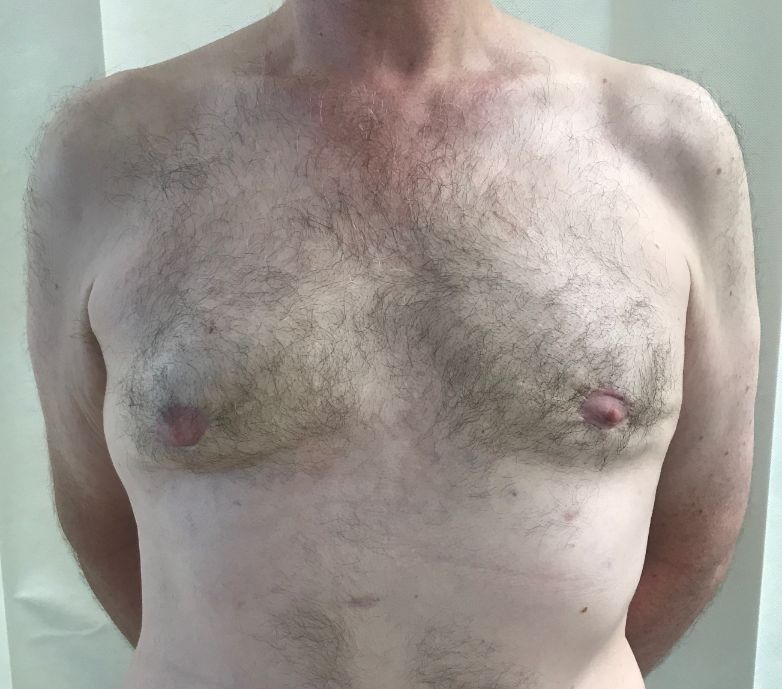
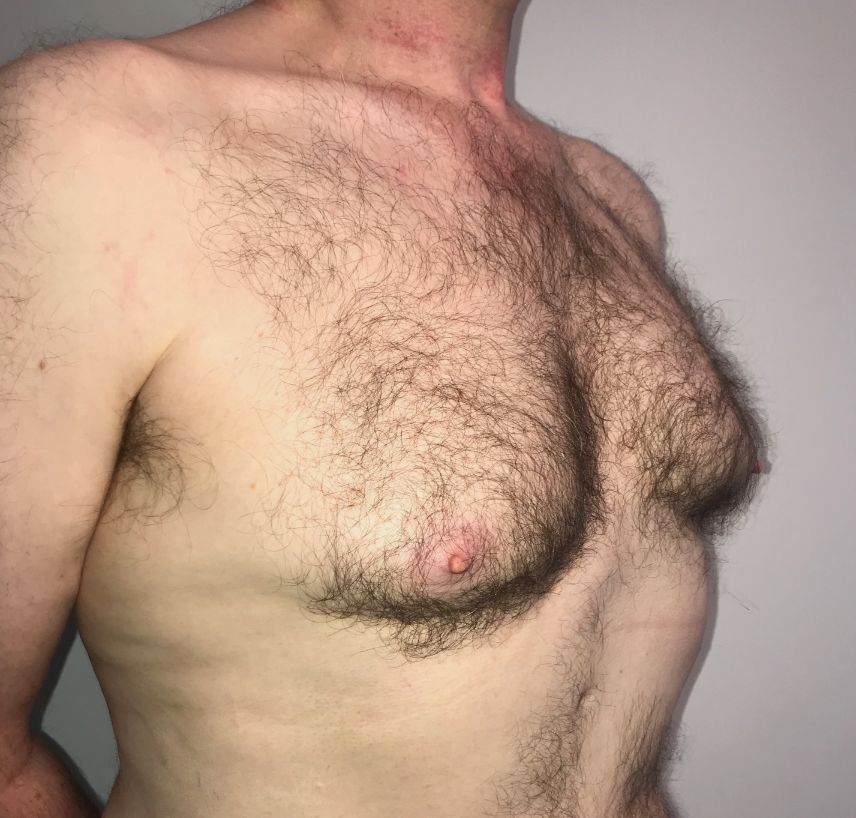
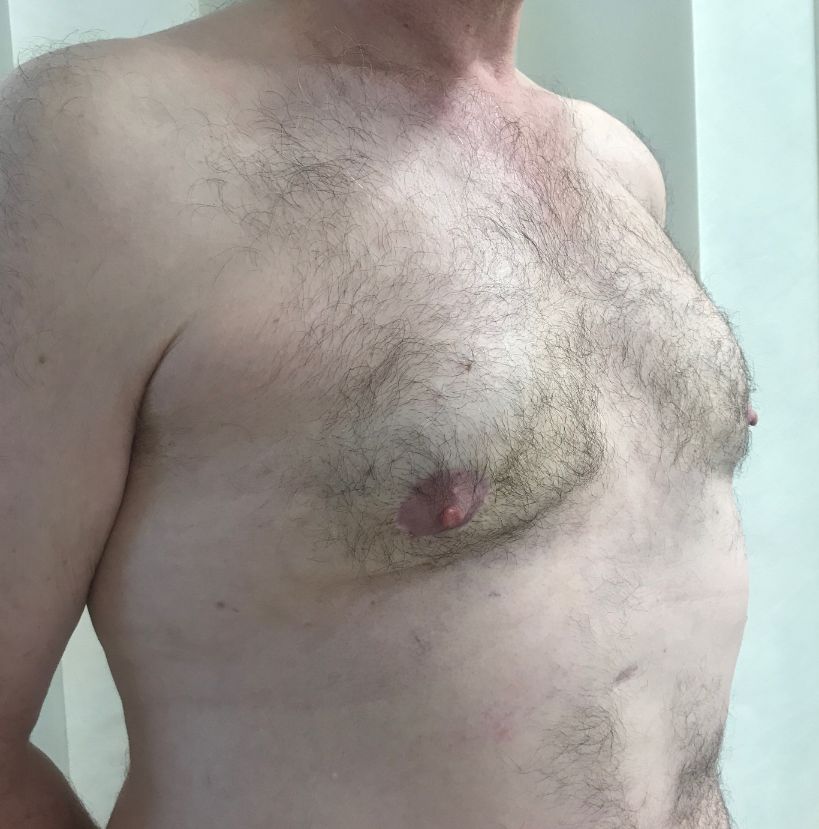
28 year old gentleman with significant gynaecomastia following weight loss. Excess skin and breast tissue removed. Anchor-shaped scars result due to the amount of skin that requires removal. The nipple positions are elevated and the areolas are reduced as part of the procedure. Asymmetry is corrected. Post-operative photographs are taken at 9 months. Scars are beginning to fade out and will continue to fade further over the next 6 months.
Before surgery

After surgery



